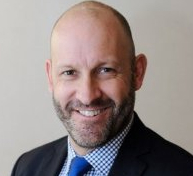INO was having coffee with an insolvency practitioner (IP) the other day when the conversation turned to the Industry Funding Model (IFM).
Pulling a document from his briefcase the IP showed how the Australian Securities and Investments Commission (ASIC) had arrived at a sum of almost $20,000 it intends to claim from his modest single liquidator firm when it begins issuing invoices in January, 2019.
Confirming that the sum accorded with his own calculations for notifiable events multiplied by the $125 metric that ASIC has floated but not yet confirmed, our IP opined that the industry funding impost would create more problems than it solves.
For a start he said, it could lead to a sustained reduction in the number of registered liquidators if ASIC found that regulating a smaller population of liquidators didn’t come any cheaper.
Each remaining liquidator might be required to pay even more he said, either through an increase in the annual levy currently set at $2,500 or increases in either the fee metric or in the range of notifiable events incurring the metric.
That he reasoned could not only drive more liquidators out of the profession but discourage younger accountants from considering a career as a registered liquidator (RL), thereby starving the profession of fresh blood and undermining diversity initiatives.
The evidence for a shrinking liquidator population isn’t hard to find. ASIC’s own list shows that while there were more than 700 RLs in mid-2017, by the same time this year the numbers had fallen to around 660.
It’s likely that some of those who’ve departed in recent times held a passive registration and rarely took appointments if at all. Others may well have been contemplating retirement, and it was the imminent imposition of the levy that helped them make up their minds.
Our coffee-drinking IP is already resigned to having to find almost $20,000. Others INO spoke to are not so accepting, probably because they are on the hook for a lot more.
One practitioner said he was looking at a $50,000 hit and would be unable to employ a junior staff member because of it. He and several others also believe the levy targets smaller practitioners because they take on the bulk of the roughly 90 percent of administrations that produce no dividend.
Sole practitioner Jamieson Louttit said that if there are between 250 to 300 small firm liquidators in Australia and they are paying an average of $20,000 than even at the bottom end of the estimate (250) that would mean that ASIC will raise $5 million of the $8.5 million industry funding target from small practitioners.
“It is so disproportionately unfair that small firm Liquidators are bearing the majority of the IFM costs,” Louttit said, adding that he was convinced: “the calculation of the IFM was advocated to government by ARITA which is now controlled by large firm Liquidators and large firm lawyers, whose only interest in the Insolvency profession is to wipe out small firm Liquidators who do the majority of the unfunded liquidation each year”.
ARITA chief executive John Winter rejected this, saying larger firms with high volume insolvency divisions that relied on technological streamlining to turn a profit handled a significant proportion of unfunded work and will likely be hit hardest.
“The industry funding model will deplete the cost effectiveness for everyone,” Winter said.
“What it’s going to do is make people far less likely to take on an unfunded appointment. Rule of thumb was perhaps that one in five would yield a dividend and pay the appointee’s remuneration. That could blow out to one in seven under IFM,” Winter said. And other trends he said were pushing the number of assetless companies even higher.
“There’s a lot more jobs with no assets in them now because more companies are being pushed into the zombie zone,” Winter lamented, explaining that pre-insolvency advisors have had such success in convincing clients to asset strip that the model has gone viral.
And he said that anecdotally, ARITA members were already talking about belt tightening as they absorbed the cost estimates ASIC circulated to RLs in July.
“There’s a whole heap of liquidators who are barely breaking $100,000 a year and lots of people are talking about investing less in training and education and anything they see as discretionary expenses,” Winter said.
Less training? Less professional development? Sounds like industry funding is a great model if you want to shrink the regulated population you’re charging for the costs of its regulation. But what happens when the next recession hits?
Will insolvency firms have the capacity to rapidly upscale as the work floods in? Will there be the talent out there available prepared to be employed?
Winter is not optimistic. “The Government will have to reconsider this when it sees the damage that’s done,” he said.
In a response to our inquiries ASIC said yesterday that it will publish its regulatory costs for FY2017-18 as well as FY 2017-18 levies by sub-sector in November 2018 with invoices will be issued in January, 2019.
Further reading:
$550 Per Appointment: New ASIC Funding Model



Anecdontally junior and senior staff working in IP firms think ASIC is a joke and ARITA is a bully serving its own undisclosed agenda. ASIC’s remedy needs to start at hiring smarter and working with (not against) the foot soliders on the frontline of insolvency. ARITA probably needs a qualified IP or academic at the helm, not a professional director/fireman.
ARITA’s current management has grown the organisation exponentially. Please focus your criticisms on issues and ideas and refrain from unsubstantiated denigration of individuals.
Telly offers his/her for any offence unintentionally caused to any party/ies.
ARITA’s agenda is publicly available for anyone to see: https://www.arita.com.au/ARITA/About_Us/Strategic_plan/ARITA/About_Us/arita-strategic-plan.aspx
The cynic in me says ASIC would quite happily see smaller liquidators go leaving them to fill the void similar to AFSA and Bankruptcy work.
Jamieson couldn’t be more wrong in his statement – ARITA did not advocate the model. We’ve opposed it at every turn. We advocated for a dividend realisation model if a system was going to be forced onto us, but we were completely opposed to the charge in any form.
The current model came about because ARITA pushed back so strongly on the original $550 per appointment model. That model would have decimated any viability of assetless or low asset jobs and that would have really punished small practices.
And we would never, ever advocate the needs of larger firms over smaller firms. Members in small-medium practices make up the majority of our membership. It would be utterly irrational for us to favour large over small.
Around a third of our current Board is in small-medium practice. Increasing that was part of why the Board advocated for changes to our Constitution ie the Board members themselves wanted greater representation out of small-medium firms.
ARITA obviously needs to improve its lobbying ability.
i’d like to see the funding put to better use. every time a court appointment is taken, directors advise that they have been contacted by multiple pre-appointment advisers/ ambulance chasers who have offered to advise them what to say and do.
is ASIC looking the right way? will my funding ensure it does?
AIIP advocates that IP’s should be open and transparant in the levy being a cost of each individual appointment and put such an estimate to creditors for the levy to be taken from the liquidation. As IPs, we should advise directors and petitioning creditors of such costs just as they would advise of the previous adveristing costs that IP had to find in the past from assetless companies. AIIP does not recommend that these levies be hidden in charge rates but estimated and informed to creditors. When has it ever been a great time to be an IP’s? The recession in 1982, 1989 to 92, or after 2007? not now… think the market will ever come back?
Peter thanks for the article. Oh you will wish you did not get me started on this.
The application of the ideologically driven IFM by ASIC (or more accurately their masters in Treasury) is simply an example of the Coalition Government picking their fights with those without the commercial or economic muscle to fight back (approx 700 registered liquidators and falling) to appease the National Party. The Nationals are agrarian socialists on many matters. They see insolvency practitioners as responsible for the losses suffered by their constituents when an appointment is made. The Nats happily ignore the decisions and actions of their constituents that contribute to the IP’s appointment and ultimate results achieved. I am sure the Coalition does not have a clue and does not care what the impact of IFM will be on the numbers of IPs staying in the game. They have kept their base happy and the result of their stupidity will have to be dealt with by a subsequent Government (perhaps of a different persuasion).
The most interesting aspect of the IFM debate is Treasury’s claim that making the regulated pay for their regulation will encourage good behavior by the regulated. Am i the only one who thinks this is farcical?
I encourage everyone to have a look at ASIC’s estimates of the costs to be recovered from the various groups subjected to the IFM. I am astounded by the costs being recovered from IPs when compared to other groups. Maybe this will change after the Banking Royal Commission reports.
I’ve said it elsewhere but I still can’t get my head around why their “budget” to regulate 700 liquidators is $10m yet for 4,300 auditors it’s only $1m! More information (transparency) is required in the CRIS as a start.
Liquidators are also right to be outraged at the farse which is called industry consultation when it comes to legislation – little if anything is ever taken on board.
Numerous submissions advocated for a % of revenue or assets realized as the only equitable methods of distributing their costs. As it stands unfunded liquidation’s bear a heavy proportion and appointments such as receiverships or large scale restructures hardly any at all (all the data for which ASIC have).
Apparently that was all seen as too controversial as it would appear if the levy was against creditors and taking money out of their dividend. It has to come from somewhere – at the moment that is most likely via increased fees.
Just stop taking ATO appointments. Treasury will have a fast rethink if there is no consequence to not paying tax.
It is difficult to understand why the structure under the bankruptcy laws set out in the Bankruptcy (Estate Charges) Act could not be used which is an off the top recovery out of recoveries in the administration. Thereby the external administrator is not foist with additional non recoverable charges entitling them to practice.